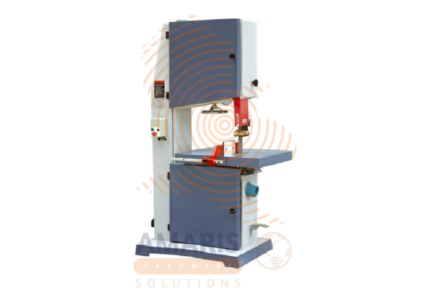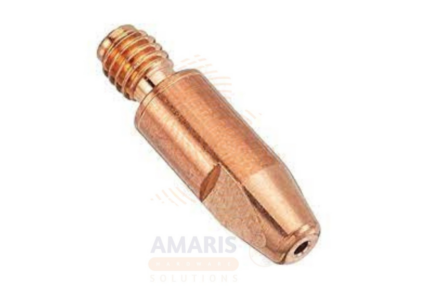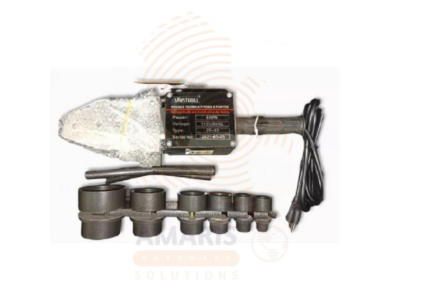Welding Mask
WhatsApp Order
A welding mask, also known as a welding helmet or welding hood, is a protective headgear worn by welders to shield their face, eyes, and neck from intense light, heat, sparks, and debris generated during the welding process. It typically features a transparent visor, often made of tinted or auto-darkening material, which automatically adjusts its opacity to protect the welder’s eyes from the intense brightness of the welding arc. The mask also provides additional protection against ultraviolet and infrared radiation, as well as physical hazards associated with welding. Overall, a welding mask is a crucial safety tool that ensures the well-being of welders by preventing injuries caused by the hazards of welding.
Description
Table of Contents
ToggleWelding Mask
Uses
-
Welding Operations: The primary purpose of a welding mask is to protect the welder’s eyes, face, and neck from the intense light, heat, and sparks generated during welding processes. It helps prevent arc eye, burns, and other injuries caused by exposure to welding radiation.
-
Eye Protection: The tinted or auto-darkening visor in a welding mask shields the welder’s eyes from harmful ultraviolet (UV) and infrared (IR) radiation emitted during welding. It prevents conditions like welder’s flash, which is a painful eye injury caused by exposure to intense light.
-
Safety Compliance: In many industrial settings, the use of welding masks is mandatory as part of safety regulations and compliance with occupational health standards. Employers are required to provide proper protective equipment, including welding masks, to ensure the well-being of workers.
-
Precision and Quality: Welding masks equipped with auto-darkening technology enhance the welder’s ability to achieve precision and quality in their work. The automatic adjustment of the visor’s opacity allows for better visibility during welding, improving accuracy and weld quality.
-
Versatility: Welding masks are versatile and can be used for various welding processes, including shielded metal arc welding (SMAW), gas metal arc welding (GMAW), and tungsten inert gas welding (TIG). They are suitable for both professional welders and hobbyists engaging in welding activities.
-
Grinding and Cutting Operations: Many welding masks have a flip-up or removable front visor, allowing the welder to use the mask for additional protection during grinding and cutting operations. This ensures consistent safety measures are maintained throughout various tasks in the welding process.
-
Comfort and Long-Term Use: Modern welding masks are designed with comfort in mind, featuring adjustable headgear, lightweight materials, and adequate ventilation. This allows welders to wear the mask for extended periods without discomfort, promoting safety and productivity.
-
Protection against Debris: Welding masks also protect the face and neck from welding spatter, sparks, and debris that can be generated during the welding process. This additional protection helps prevent burns and injuries caused by contact with hot metal particles.
SAFETY HANDLING PRECAUTIONS
Safety Precautions
-
Proper Fit and Adjustment:
-
Ensure that the welding mask fits securely on your head and covers your face, eyes, and neck adequately.
-
Adjust the headgear to achieve a comfortable and secure fit to prevent the mask from slipping during use.
-
-
Inspect the Mask:
-
Regularly inspect the welding mask for any damage, cracks, or signs of wear.
-
Check the auto-darkening filter (if applicable) for proper functioning, and replace it if damaged.
-
-
Select the Right Shade:
-
Choose the appropriate shade of the welding mask based on the welding process and materials being used. Refer to welding standards or guidelines for recommended shade numbers.
-
-
Eye and Face Protection:
-
Ensure that the welding mask provides proper eye and face protection against UV and IR radiation. The mask should comply with safety standards for welding equipment.
-
-
Use Welding Screens and Curtains:
-
Install welding screens or curtains to protect nearby workers from arc flash and to confine the welding area, reducing the risk of bystander exposure.
-
-
Ventilation:
-
Work in well-ventilated areas or use local exhaust ventilation systems to remove welding fumes and gases, ensuring a safer working environment.
-
-
Remove Combustibles:
-
Clear the welding area of flammable materials, liquids, and other combustibles that could pose a fire hazard during welding.
-
-
Wear Personal Protective Equipment (PPE):
-
In addition to the welding mask, wear appropriate PPE, such as flame-resistant clothing, gloves, and safety boots, to protect against burns and other potential injuries.
-
-
Inspect Welding Cables and Equipment:
-
Regularly inspect welding cables, connectors, and other equipment for damage. Repair or replace any damaged components to maintain safe working conditions.
-
-
Secure Workpieces:
-
Securely clamp or fix workpieces to prevent movement during welding, reducing the risk of accidents and injuries.
-
-
Follow Welding Procedures:
-
Adhere to established welding procedures and safety guidelines. Ensure that you are trained and qualified to perform the specific welding task at hand.
-
-
Post-Weld Inspection:
-
After welding, inspect the completed welds for quality and integrity. Check for any defects or signs of inadequate penetration.
-
-
Emergency Preparedness:
-
Be familiar with emergency procedures, including the location of fire extinguishers and first aid kits. Know how to respond to accidents or injuries promptly.
-
-
Take Breaks:
-
Take regular breaks to prevent fatigue, especially during extended welding sessions. Fatigue can lead to a loss of focus and an increased risk of accidents.
-
Related products
ACCESSORIES FOR DIE POLISHER SET
Accessories for Die Polisher Set typically refers to a collection of ten individual components designed for use with a die polisher, with each accessory having a diameter of 6mm. These accessories are likely to be various tools or attachments intended for polishing or refining surfaces in die-cutting applications.
M8 Tips for MIG Welding Torch
M8 Tips for MIG Welding Torch, or Metal Inert Gas welding torch, is a handheld device used in the MIG welding process. It consists of a handle, trigger, and a nozzle through which a consumable electrode wire is fed. The torch is connected to a welding power source that generates an electric arc between the wire and the workpiece, melting the wire and creating a weld. The torch also incorporates a shielding gas, typically a mixture of inert gases, to protect the weld from atmospheric contamination. MIG welding torches are versatile tools widely used for their ease of operation and efficiency in joining various metals.
Plastic Pipe Welding Set
A plastic pipe welding set is a specialized equipment kit designed for joining or fusing plastic pipes through heat and pressure. It typically includes a welding machine, heating element, and various accessories required for the fusion process. The machine heats the ends of the plastic pipes to a molten state, and then they are pressed together to form a strong and durable bond as the material cools and solidifies. This welding process is commonly used in construction, plumbing, and other industries where plastic pipes are utilized for fluid or gas conveyance. The welding set ensures a secure and leak-free connection between plastic pipes, contributing to the overall integrity and reliability of the piping system.
Steel Wire Brush
A steel wire brush refers to a handheld tool used for various cleaning, deburring, and surface preparation tasks. It consists of a handle and six rows of steel wire bristles attached to the head. The purpose of the brush is to remove rust, paint, scale, or other debris from surfaces such as metal, wood, or concrete. The steel bristles are arranged in rows to provide effective coverage and enhance the brush's ability to scrub and clean. This type of brush is commonly employed in metalworking, welding, construction, and other industrial applications where abrasive cleaning is necessary.
Welding Glass
A welding glass, also known as a welding lens or welding filter, is a specialized protective eyewear designed for use by welders to shield their eyes from intense light and harmful radiation produced during welding processes. Typically made of a tinted or shaded glass, welding glasses filter out ultraviolet (UV) and infrared (IR) radiation, as well as visible light, to provide adequate protection for the welder's eyes. The level of shading in welding glass is specified by a shade number, with higher numbers indicating greater protection against intense light. Welding glasses are a crucial safety measure to prevent eye injuries and conditions such as arc eye or welder's flash, which can result from exposure to the intense light generated during welding.
Welding Gloves
Welding gloves are specialized protective hand coverings designed to shield welders from the various hazards associated with welding processes. These gloves are typically made from heat-resistant materials such as leather or flame-resistant fabrics, providing insulation against the intense heat generated during welding. Additionally, welding gloves offer protection against sparks, molten metal, and UV radiation produced during welding operations. They play a crucial role in ensuring the safety of welders by minimizing the risk of burns, cuts, and other injuries to the hands and wrists while allowing for dexterity and control during the welding process.
Welding Googles
Welding goggles are specialized protective eyewear designed to shield the eyes from intense light, sparks, and debris generated during welding processes. They typically feature dark lenses that provide effective protection against the bright arc produced during welding, preventing eye injuries and minimizing the risk of vision damage from ultraviolet (UV) and infrared (IR) radiation. Welding goggles also offer a secure and comfortable fit to ensure the safety and well-being of the wearer while engaged in welding activities.
Welding Locking Pliers
Welding locking pliers, often referred to as welding clamps or welding grip pliers, are versatile hand tools designed for securely holding and clamping materials during welding or metalworking tasks. These pliers typically have a locking mechanism that allows them to firmly grip onto the workpiece, providing a stable and hands-free hold. The jaws of welding locking pliers are often serrated or textured to enhance grip on various materials, and they can be adjusted to accommodate different sizes of workpieces. This tool is widely used in welding and fabrication processes to hold pieces together, ensuring accurate and stable alignment during welding or other metalworking operations.


 Acrylic Sealants
Acrylic Sealants Construction Adhesives
Construction Adhesives Double-Sided Tape
Double-Sided Tape Duct Tape
Duct Tape Electrical Tape
Electrical Tape Epoxy & Resins
Epoxy & Resins Masking Tape
Masking Tape
 Automotive Wrenches & Socket Sets
Automotive Wrenches & Socket Sets Battery Chargers & Jump Starters
Battery Chargers & Jump Starters Car Jacks & Stands
Car Jacks & Stands Car Wash & Detailing Products
Car Wash & Detailing Products Diagnostic Tools
Diagnostic Tools Tire Inflators
Tire Inflators Vehicle Lighting
Vehicle Lighting Oil & Lubricants
Oil & Lubricants
 Adhesives & Sealants
Adhesives & Sealants Bricks & Blocks
Bricks & Blocks Cement & Concrete
Cement & Concrete Drywall & Plaster
Drywall & Plaster Flooring (Tiles, Wood, Laminate)
Flooring (Tiles, Wood, Laminate) Lumber & Plywood
Lumber & Plywood Paints, Primers & Coatings
Paints, Primers & Coatings Insulation Materials
Insulation Materials Roofing Materials
Roofing Materials
 Circuit Breakers
Circuit Breakers Electrical Cables & Wires
Electrical Cables & Wires Switches & Sockets
Switches & Sockets Fuses & Relays
Fuses & Relays Connectors & Terminals
Connectors & Terminals Electrical Boxes & Panels
Electrical Boxes & Panels Conduit & Fittings
Conduit & Fittings Lighting Fixtures & Bulbs
Lighting Fixtures & Bulbs Extension Cords & Power Strips
Extension Cords & Power Strips
 Anchors
Anchors Bolts
Bolts Clips & Clamps
Clips & Clamps Screws
Screws Nuts
Nuts Washers
Washers Rivets
Rivets Nails
Nails Threaded Rods
Threaded Rods
 Hammers
Hammers Measuring Tools (Tapes, Levels, Calipers)
Measuring Tools (Tapes, Levels, Calipers) Screwdrivers
Screwdrivers Pliers & Cutters
Pliers & Cutters Saws & Blades
Saws & Blades Chisels & Punches
Chisels & Punches Allen Keys & Hex Keys
Allen Keys & Hex Keys Ratchets & Socket Sets
Ratchets & Socket Sets Wrenches & Spanners
Wrenches & Spanners
 Power Tool Accessories (Blades, Bits, Discs)
Power Tool Accessories (Blades, Bits, Discs) Rotary Tools
Rotary Tools Saws (Circular, Jigsaw, Reciprocating)
Saws (Circular, Jigsaw, Reciprocating) Drills & Drivers
Drills & Drivers Grinders & Sanders
Grinders & Sanders Heat Guns
Heat Guns Nail Guns
Nail Guns Impact Wrenches
Impact Wrenches Batteries & Chargers
Batteries & Chargers
 Pipes & Fittings (PVC, Copper, PEX)
Pipes & Fittings (PVC, Copper, PEX) Plumbing Tools
Plumbing Tools Pumps & Motors
Pumps & Motors Sealants & Adhesives for Plumbing
Sealants & Adhesives for Plumbing Valves & Taps
Valves & Taps Water Heaters
Water Heaters Drainage Systems
Drainage Systems Faucets & Fixtures
Faucets & Fixtures Hoses & Tubing
Hoses & Tubing
 Hinges & Latches
Hinges & Latches Hooks & Brackets
Hooks & Brackets Window Hardware
Window Hardware Chains & Cables
Chains & Cables Casters & Wheels
Casters & Wheels Shelving & Storage Systems
Shelving & Storage Systems Door Handles & Locks
Door Handles & Locks Drawer Slides & Cabinet Hardware
Drawer Slides & Cabinet Hardware
 Personal Protective Equipment (PPE)
Personal Protective Equipment (PPE) Respirators & Masks
Respirators & Masks Safety Glasses
Safety Glasses Safes
Safes Security Cameras
Security Cameras Gloves
Gloves Helmets
Helmets Ear Protection
Ear Protection Fire Safety Equipment
Fire Safety Equipment Locks & Padlocks
Locks & Padlocks Motion Sensors & Alarms
Motion Sensors & Alarms
 Garden Fencing
Garden Fencing Garden Furniture Hardware
Garden Furniture Hardware Lawn Mowers
Lawn Mowers Trimmers & Edgers
Trimmers & Edgers Shovels & Spades
Shovels & Spades Rakes & Hoes
Rakes & Hoes Pruning Shears & Loppers
Pruning Shears & Loppers Watering Systems (Hoses, Sprinklers, Nozzles)
Watering Systems (Hoses, Sprinklers, Nozzles)
 Interior Paints
Interior Paints Paint Brushes & Rollers
Paint Brushes & Rollers Paint Strippers & Thinners
Paint Strippers & Thinners Paint Trays & Accessories
Paint Trays & Accessories Exterior Paints
Exterior Paints Spray Paints
Spray Paints Primers & Undercoats
Primers & Undercoats Varnishes & Stains
Varnishes & Stains
 Gaskets & Seals
Gaskets & Seals Hydraulic Fittings
Hydraulic Fittings Industrial Fasteners
Industrial Fasteners Industrial Hoses
Industrial Hoses Lubricants & Greases
Lubricants & Greases Metal Sheets & Bars
Metal Sheets & Bars Bearings & Bushings
Bearings & Bushings Belts & Pulleys
Belts & Pulleys
 HVAC Filters
HVAC Filters Insulation for HVAC
Insulation for HVAC Air Conditioners
Air Conditioners Refrigerants
Refrigerants Ventilation Ducts & Fittings
Ventilation Ducts & Fittings Thermostats & Controllers
Thermostats & Controllers Fans & Blowers
Fans & Blowers
 Pegboards & Hooks
Pegboards & Hooks Shelving Units
Shelving Units Storage Bins & Containers
Storage Bins & Containers Toolboxes & Tool Chests
Toolboxes & Tool Chests Workbenches
Workbenches Drawer Organizers
Drawer Organizers Labeling Supplies
Labeling Supplies
 Welding Accessories (Clamps, Brushes)
Welding Accessories (Clamps, Brushes) Welding Electrodes & Rods
Welding Electrodes & Rods Welding Helmets & Gloves
Welding Helmets & Gloves Welding Machines
Welding Machines Soldering Irons & Stations
Soldering Irons & Stations Flux & Solder Wire
Flux & Solder Wire
 Generator Accessories
Generator Accessories Inverters
Inverters Portable Generators
Portable Generators Power Inverters
Power Inverters Transfer Switches
Transfer Switches Diesel & Gasoline Generators
Diesel & Gasoline Generators
 Transport Equipment: Carts, Dollies, and Hand Trucks
Transport Equipment: Carts, Dollies, and Hand Trucks Storage Solutions: Pallets, Racks, and Containers
Storage Solutions: Pallets, Racks, and Containers Lifting Equipment: Hoists, Cranes, and Jacks
Lifting Equipment: Hoists, Cranes, and Jacks Conveyors and Accessories: Belts and Rollers
Conveyors and Accessories: Belts and Rollers







